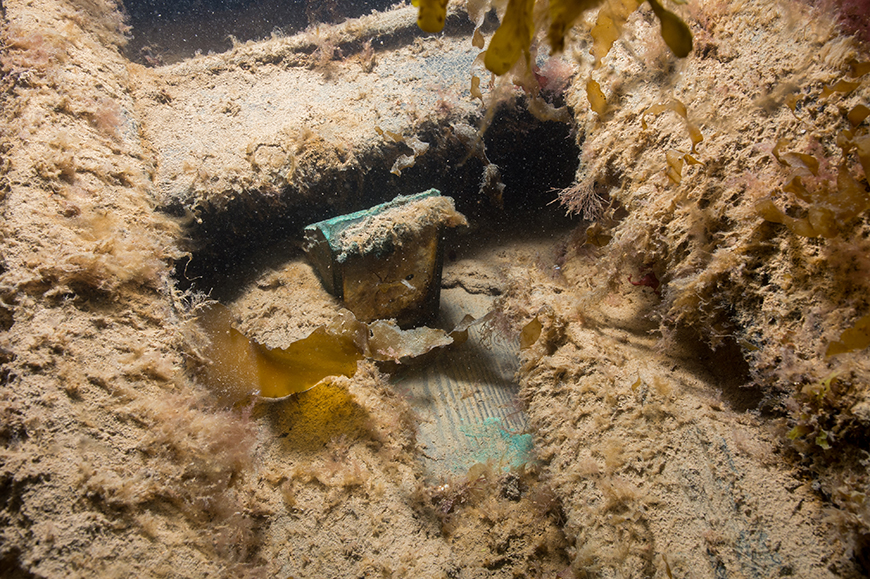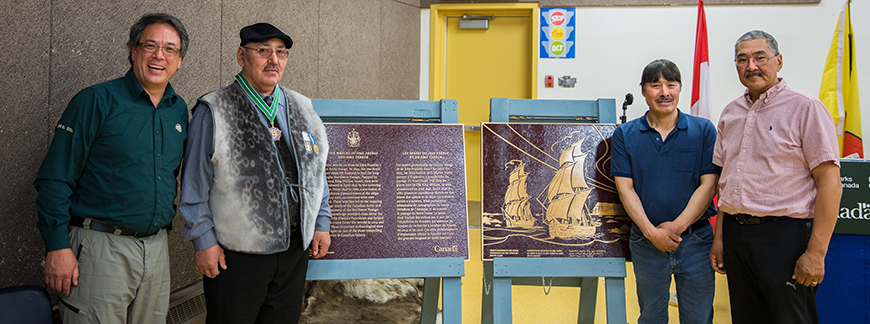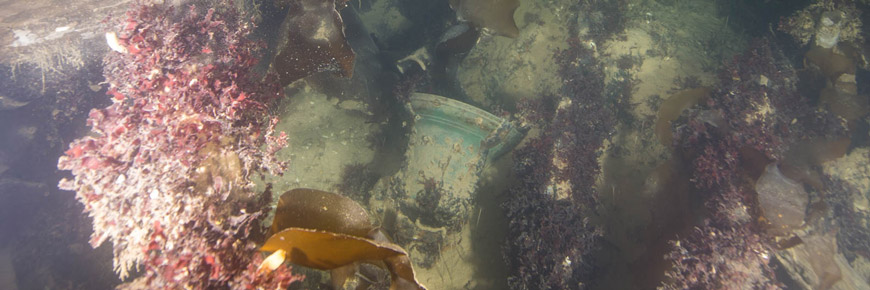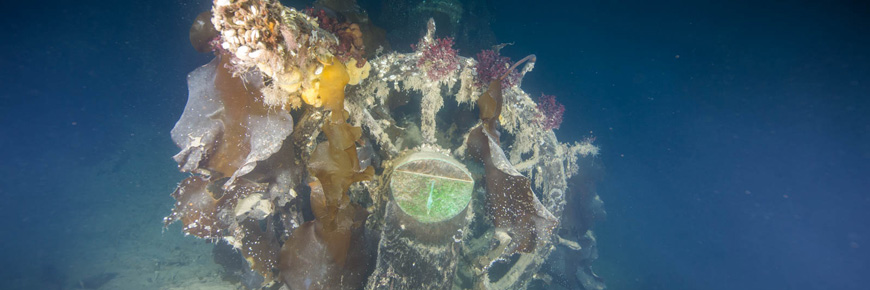
Exploration 2017
Wrecks of HMS Erebus and HMS Terror National Historic Site
HMS Erebus
A wide range of activities took place both at the wreck of HMS Erebus and in Gjoa Haven from late August to early September 2017. During the last week of August, Parks Canada’s Underwater Archaeology Team set-up a shore camp on an island near the wreck of Erebus, joined by Erebus and Terror Inuit Guardians from Gjoa Haven.
In September 2017, Parks Canada’s underwater archaeologists explored deeper inside the wreck of the HMS Erebus, and were able to capture some images. The 2017 mission also involved preparations for future explorations of HMS Erebus, including excavation of the ship.
The discovery of HMS Erebus and HMS Terror would not have been possible without Inuit knowledge. Parks Canada has worked with the Franklin Interim Advisory Committee to develop the Inuit Guardians Program, an important initiative to further integrate Inuit Knowledge into the ongoing management of the wrecks. The Guardians monitor the two sites during periods of minimal ice and to report any unauthorized vessels. Eventually, the Guardians will play a key role in hosting visitors to the wreck sites, sharing knowledge about Inuit culture as well as presenting the Franklin story and the compelling story of encounters between Inuit in Nunavut and European explorers.
Summary of exploration at HMS Erebus
Due to strong winds, the team was only able to dive to the wreck early one morning. However, with good underwater visibility the team was able to tour the wreck and check on its condition.
The underwater archaeologists did not notice any major changes since 2016.
A few of their new finds include:
- Up to twelve intact or partially intact black glass bottles trapped under the collapsed upper deck near the stern
- A roof for a mercurial artificial horizon, part of a device used for navigation
- More small uniform buttons

Celebrating with the community
Following the fieldwork at the Erebus, the Underwater Archaeology Team and other Parks Canada staff, including CEO Daniel Watson, took part in the Umiyaqtutt Festival in Gjoa Haven, a week of celebrations, presentations, and a community feast. It included the plaque unveiling of the Wrecks of HMS Erebus and HMS Terror National Historic Site.

HMS Terror
The Underwater Archaeology Team visited the wreck site of HMS Terror in April, 2017. An archeologist from the Government of Nunavut joined the team. The group was supported by the Gjoa Haven Hunters and Trappers Association and CAP Enterprises of Gjoa Haven.
HMS Terror Underwater Views
Transcript
Parks Canada Logo
A group of people in winter clothing are digging through snow. Snow machines and a qamutik (sled) are in the background.
[Atmospheric music.]
Title: Spring 2017 dive on HMS Terror.
An aerial shot of a camp with tents, qamutiks, snow machines and the flags of Canada and Nunavut.
A series of underwater shots showing a canon, a draught mark on the side of the ship and what appears to be a door.
An aerial shot shows the camp again.
Parks Canada logo
© Her Majesty the Queen in Right of Canada, represented by Parks Canada, 2017.
Canada wordmark
Getting below the ice
To get started, team members from the Gjoa Haven Hunters and Trappers Association excavated a two–metre-deep hole through the sea ice. Next, the underwater archeologists launched their underwater remotely operated vehicle (ROV) which collected photos and video of the exterior of HMS Terror.
Ten things we observed or discovered on and around HMS Terror:
- Anchors
- There were at least four anchors still attached in position.
- Small boat
- A small boat was found laying on the seabed off the port stern quarter of the vessel.
- Propeller
- The propeller was not installed at the time HMS Terror sank.
- Rudder
- The rudder was not in place. It could be on the seafloor covered with silt.
- Bell
- The bell has fallen from its belfry support and was found partly on the deck of the ship.
-

HMS Terror Bell has fallen from its support and located on the deck
- Water closets
- There are two water closets (washrooms) on the rear deck. The door of one of them was found open.
- Windlass
- The windlass (a type of winch used to move heavy weights) is displaced and a cable is warped onto it.
- Cannon
- One cannon was seen on the upper deck (it is not on a carriage).
- Windows
- There were more broken stern gallery windows than intact ones.
- Draft marks
- The markers on the stern that show how much water is between the waterline and the bottom of the ship were in roman numerals and were still visible.

HMS Terror helm, as viewed from the stern.
Conclusions drawn from the evidence
The evidence observed on and around Terror indicates that the ship was not left at anchor. This is known because both bow anchor cables were secured to their respective anchors and lashed to either bulwark (the sides of the ship above the deck). It also appears that the small boat went down with the ship, because it was on the seafloor below the davits (cranes used to lower boats).
It is impossible to say at this point if HMS Terror was closed up when it was abandoned because some hatches are open and there is no evidence of boarded up openings. Finally, it is impossible to say at this point if HMS Terror had been re-manned and sailed there or if it drifted in.
Don't forget to follow @PCArchaeology on X and “Like” Parks Canada’s Facebook page.
Related links
- Date modified :